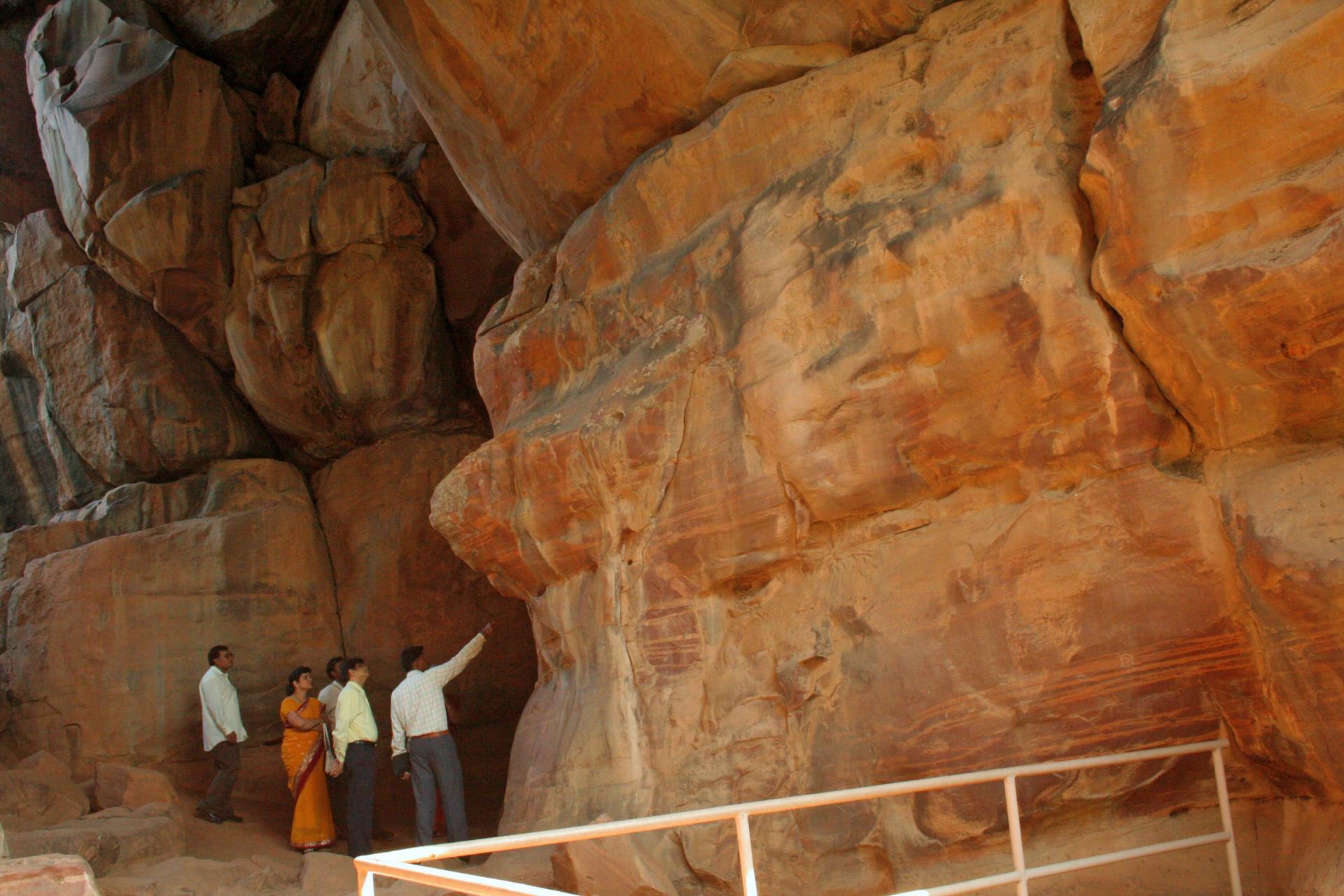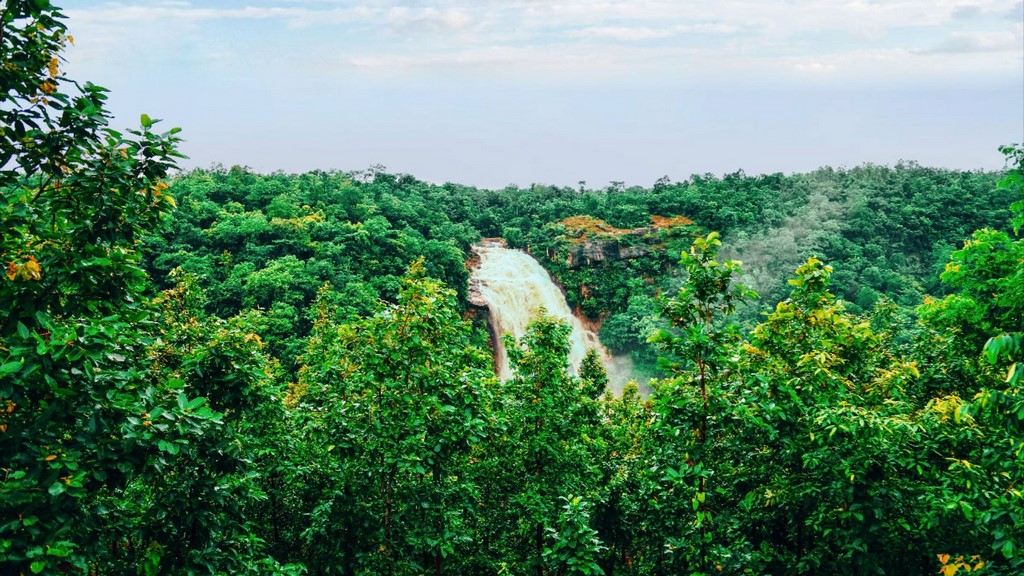
Sorry, we couldn't find anything that matches your search.
Destination

Famous Places to Explore in Hyderabad
A vibrant city with the imposing...

Raipur Tourist Places | Best Place to Visit
The stronghold of several erstwhile...

Ahmedabad
Declared as India's first UNESCO World...
#
The Satpura Tiger Reserve is an extensive forest covering a broad array of unique Central Indian flora and fauna. This beautiful reserve is cradled in the Mahadeo Hills of the Satpura Range that is characterized by deep valleys, narrow gorges, cascading waterfalls and rich vegetation.
-
Start : Bhopal
-
End : Bhimbetka
-
Time : Five Days
Day 1 Bhopal - Sita Dongri
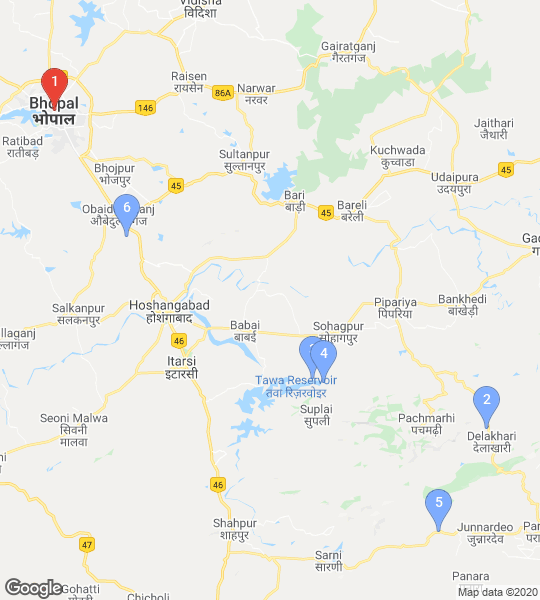
After arrival at the park, enjoy lunch at Sita Dongri, and later take a walk to Dehelia Camp. You can camp near the river and look out for the Indian giant squirrel.
Day 2 Trek to Manakachar
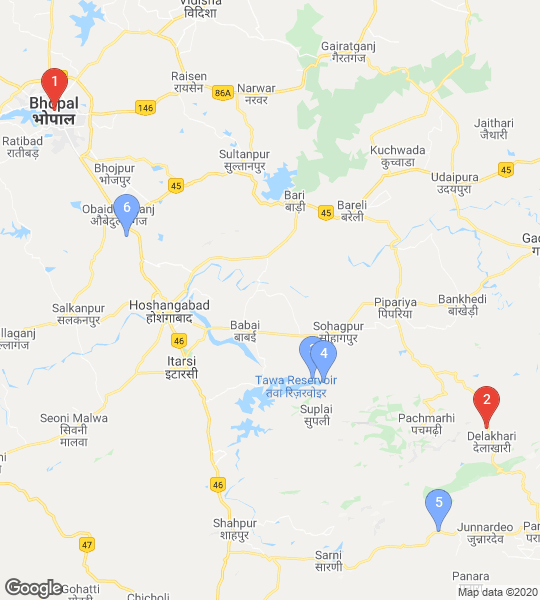
This 16km-trek along the banks of the Denwa takes you through pristine woodlands. As we walk along the Denwa, we witness the variety of scenery that Satpura offers; high sandbanks, narrow waterways, and the confluence with the Bainganga River await. Getting to the Jhela Camp can be tricky; you might have to wade through knee-deep waters. Top attractions are crested serpent eagle, kingfishers, grey wagtails, Tickel's blue flycatcher and Indian vultures. En-route there is a steep cliff that is used by the endangered Indian vultures as a nesting site. After Jhela, visit the Denwa river bed and walk 6 km through dry deciduous woodland towards Manakachar.
Day 3 Manakachar to Satpura National Road
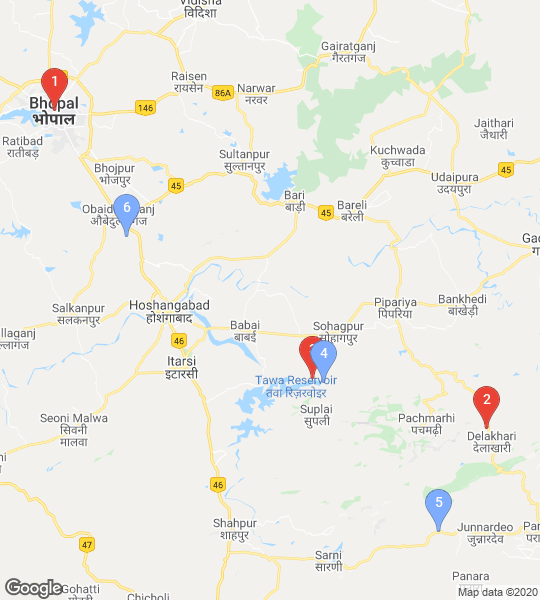
Depart for a game park drive in open-top jeeps looking for tigers, sloth bears, and birdlife. The state forest department guides along with the naturalists deliver a truly exhilarating experience filled with insightful knowledge on the flora and fauna that is indigenous to the Satpura Tiger Reserve.
Day 4 Satpura National Park
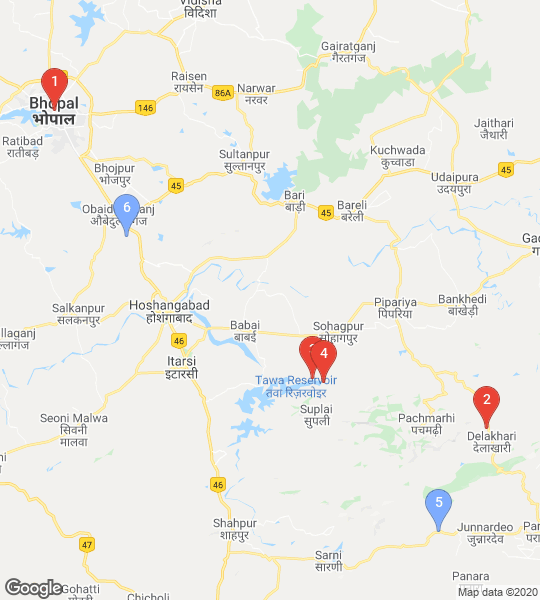
Satpura’s undulating terrain makes it ideal for trail biking. Parsapani, a pristine forest patch on the west side of the national park is a picturesque forest with abundant wildlife. You can enjoy a 15 km early morning bicycle ride in this area and ride through patches of dry deciduous forests before you enter a sprawling meadow. The meadow is located near the backwater of Denwa river and the availability of succulent grasses and water attract several herbivores like sambar deer, wild pig and spotted deer. The occasional sloth bear, leopard, wild dogs and tiger also roam these forests. OROn a guided nature walk, searching for endemic bird and animal life, naturalists and the forest guides track tigers, leopards, sloth bear and other resident animals. Birdwatchers and butterfly enthusiasts can enjoy viewing the ample bird and butterfly life in the reserve.
Day 5 Satpura National Park to Bhopal via Bhimbetka Caves
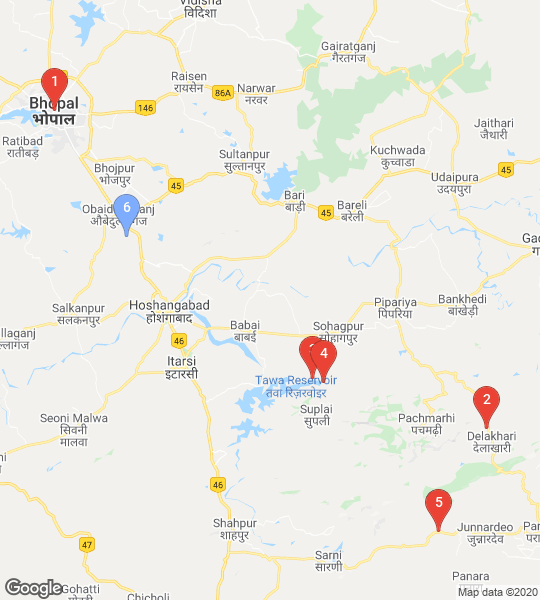
After a leisurely breakfast, check out and drive to the city of lakes – Bhopal, visiting a village bazaar en route and the UNESCO World Heritage Site of Bhimbetka caves for an hour. Later proceed for onward journey.
The villages around Satpura are host to two of India’s most famous ancient tribes:
Gond - The Gond is a very large tribe of Central India, numbering 12.7 million. Traditionally, they have been cultivating land, producing crops, and raising livestock. They grow rice, wheat, and different types of lentils, sesame, millet and cotton. Families live as a smaller unit with parents and children and also in extended families with other relatives. The Gond folk tradition is rich in art and craft and they are very fond of music and dance. Both men and women sing and dance to the energetic sound of instruments like the dholak, a double-sided drum. The Pardhan tribe is the official narrators of traditional folk stories for this community. They tattoo their bodies with stars, scorpions, flower, bird and animal patterns. The walls of their homes are painted with scenes inspired by nature – animals, birds, people and trees. These are drawn in red and black on a white background. They make colourful floor designs called rangoli and beautiful pottery, baskets and other crafts. Woodcarving is another talent.
Bhil - The Bhil tribe is a proud and ancient ethnic group inhabiting the Western part of Central India. The word 'bhil' is derived from the word ‘bil’ which means bow. Well over 1.5 million of them live as marginal farmers in almost 2000 villages. The members of the Bhil tribe possess a vast array of rich customs and traditions. Their colourful festivals and ceremonies are outbursts of joy and foster their sense of community. Dance and music are an integral part of their culture. Spread over a large area, they speak a smattering of languages endemic to the area they live.
Bhimbetka is where India’s rich collection of prehistoric cave paintings was discovered in 1957. The rock shelters of Bhimbetka are in the foothills of the Vindhyan Mountains on the southern edge of the central Indian plateau. Within massive sandstone outcrops, above the comparatively dense forest, are five clusters of natural rock shelters, displaying paintings that appear to date from the Mesolithic Period right through to the historical period. The cultural traditions of the inhabitants of the villages adjacent to the site bear a strong resemblance to those represented in the rock paintings. The over 600 rock shelters – the largest group in the world –depict scenes of hunting, dancing, music, horse and elephant riders, animals, honey collection, household scenes, rituals and religious symbols. Awe-inspiring indeed!





